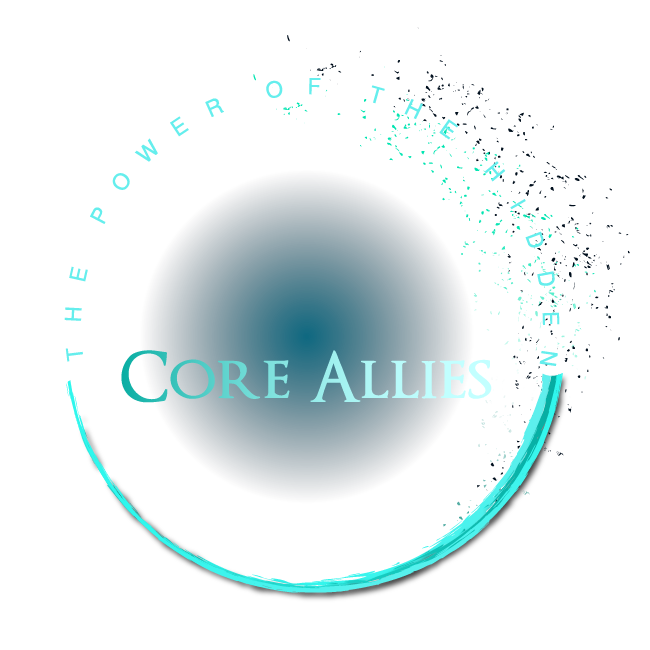Pathway to the Power of the Hidden
In this series of posts on how understanding the unconscious can lead to lasting change, I’ve written about how change is often prevented by unconscious barriers, and given an exercise where you decide on something you want to change, and ask yourself questions to identify what may be holding you back. There is a temptation to think that these steps are all you need to change.. Once you know what should be changed and what is stopping you, all it requires is the will power to actually make the change, right? Alas, it’s not that easy. If it was, we would all keep our New Year resolutions.
Instead of a simple, linear process, I believe that lasting change requires a cycle of three elements, which I call the Pathway to the Power of the Hidden. The three elements of the pathway are Awareness, Insights, and Experiments. Each element feeds into the next one, and since it is a cycle, experiments feed back into awareness. Hard changes often require multiple trips around the pathway, each one bringing you closer to the desired outcome.
Awareness is a matter of opening yourself up to observing how you are reacting to the desired change, and what is holding you back. It is gathering the data you need to make informed decisions. You need to be aware on three levels, which I call head, heart, and hips. Head is the intellectual level, what you are consciously thinking about the change and your actions. Why do you want to change? What would be the advantages of changing? What would be the disadvantages? Heart is the emotional level, what you feel about the change. What scares you about changing? What excites you? Hips is the more visceral, physical level: how your body reacts to change. Do you tense up when you do something differently? Do you reach for a fidget spinner when you think about a problem? The awareness step is allows you to really understand what is happening to you at all levels when you try to change.
Insights are understanding the data you have gathered through awareness. What does the data tell you about your resistance to change? Can the data reveal the root causes of your problem? Three things to look for when seeking insights are themes, dynamic tensions, and unconscious patterns. Themes are messages from your head, heart, and/or hips that you notice keep coming up. Do you often feel scared when you have to make a decision? Do you feel anxious when you have to meet with your boss? Do you always want to redo work you have delegated to others? Dynamic tensions are observations that appear to be in conflict with each other. Do you enjoy working in your office, but dread coming in every morning? Do you enjoy starting projects, but never want to take the first step? Unconscious patterns are similar things that keep happening. Do you have a honeymoon period with new hires, where they can do no wrong, before realizing they can’t be trusted? Do you constantly share too much information when explaining assignments? Once you have identified these themes, dynamic tensions, and unconscious patterns, you can begin to understand what may be causing them, and how you can change.
Experiments are where you take your awareness and insights and turn them into action, through mindset shifts and behavioral actions. Experiments are not an attempt to make a single leap to the final desired outcome. Instead, they are smaller changes that work towards that outcome. And as the name suggests, they should be done in a spirit of exploration. Not all experiments will have the desired result, but that’s not a failure, since the attempt will have brought new awareness and continued the cycle.
Mindset shifts are small changes in how you think about a situation. When a report turns in unacceptable work, instead of getting angry, think of it as an opportunity to mentor them. When you have to make a decision without sufficient data, instead of being frustrated, think of it as an opportunity to become more comfortable with uncertainty. Behavioral actions are small changes in your behavior. Check in with each report once a week. Don’t interrupt others in meetings. Be clearer when delegating tasks.
A typical experimental phase lasts about two weeks, though it can vary depending upon the experiment. You want it to be short enough that it doesn’t feel intimidating, but long enough that you gain usable data. While you are carrying out the experiments, you should already be shifting back to awareness, noticing how your head, heart, and hips react to the new mind sets or behaviors. At the end, you can then review what you became aware of, gain new insights, and decide whether to continue this experimental path, and what new experiments you want to try.
In last month's exercise of identifying a desired change, answering questions about it, and considering the answers, you have already taken the first two steps of awareness and insight. Your initial awareness and insights may be fairly superficial at this stage, but that isn’t particularly important in your first trip around the cycle. Based on what you have learned about yourself, it is time to come up with an experiment or two. Conducting the experiment will allow you to move to more observations and deeper insights next time around.
By repeating this cycle multiple times, you will continue to learn more about what is holding you back and how you can overcome these barriers. Step by step, you will make the change you desire.

